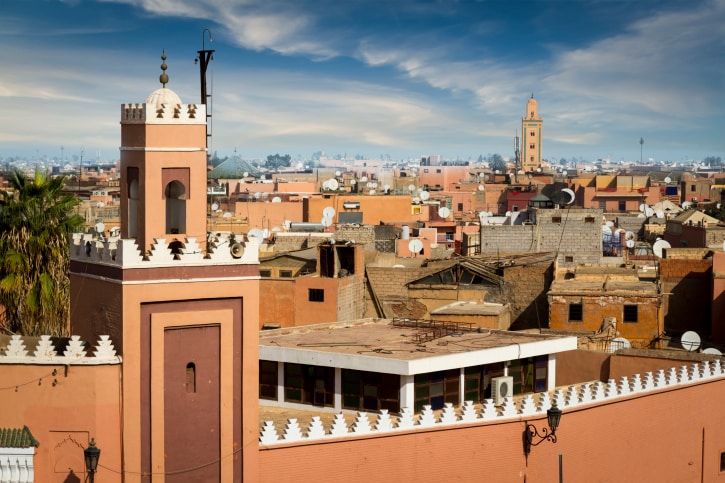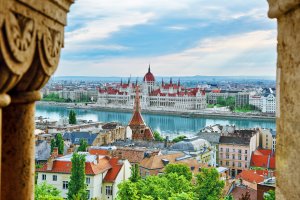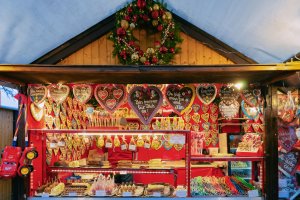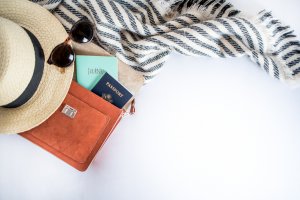My first impression of Marrakesh reminded me of Scottsdale, Arizona. It has that same ruddy-colored dirt, stucco buildings, and towering palm trees. It’s flat with mountains in the distance. This surprised my friends and I who harbored a different impression about the Moroccan city of legend and lore.

While at the Medina, a walled part of Morocco, I purchased two of my favorite trinkets ever. The first is a sleek carved mahogany elephant doorstop. I bought six and easily tucked them into my suitcase. The second was a small necklace whose delicate sky-blue stones caught my eye. When I asked the proprietress about those stones, “Zafears, zafears,” she said enthusiastically. They are small matched raw sapphires set off with seed pearls. I bought it on the spot and wear it with jeans and cocktail dresses.
In case you haven’t already caught my drift, Marrakech shopping is better than Ali Baba’s treasure cave. Chic boutiques with original and fashionable items are dotted in different nooks. It is best to have a guide until you understand how to get around and navigate the cultural in’s and out’s. All the reputable hotels will have guides or engage a destination specialist in advance.
The French had a huge influence in Morocco, and is still a hot spot for French vacations and second homes. Parisian fashion icon Yves St. Laurent and his partner Pierre Bergé discovered the Jardin Majorelle in 1966 during their first stay in Marrakech and eventually bought the property. It is open every day of the year for visitors to enjoy.

Majorelle, the artist who began the now 2.5 acres of gardens, was famous for using one of the most brilliant colors of blue in the light spectrum, now known as Majorelle blue.
My two favorite hotels include the Amenjena, one of the exclusive Amen resorts offering sweeping vistas, and Villa des Oranges next to the medina and close to the airport. The pictures do not do them justice. Amenjena is pricey like most Amen resorts, is in a suburb part of the city.
The Relais y Chateau-affiliated Villa des Oranges is right on edge of the medina. This gem is a more intimate, riad-like property. It feels deeply African, with dark chocolate woods and contrasting white plaster trims. Photographs on the Internet do not capture the beauty of the courtyards and traditional white sculptured arches. Frankly, I had my best meal – that French connection again – at the hotel’s restaurant.
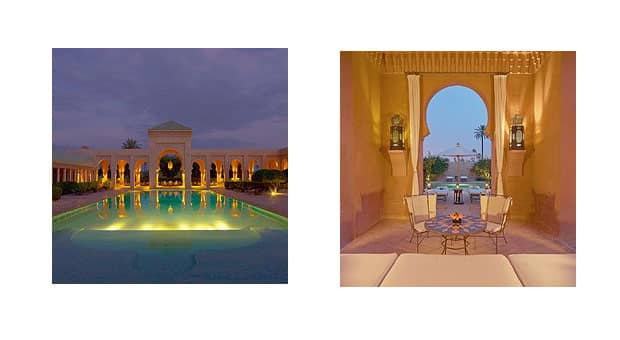
The famed Mamounia with its historical pedigree and renovation several years ago has received a great deal of press but was not our favorite for spending the night or even a meal. However, it makes a great place to stop for afternoon tea or cocktails. The gardens are lovely. The rooms are luxurious and beautiful; but, somehow, the vibe was too contrived for my taste. Let’s hope it has mellowed with age. The King and a group of his investor friends reinvigorated this iconic property several years ago.
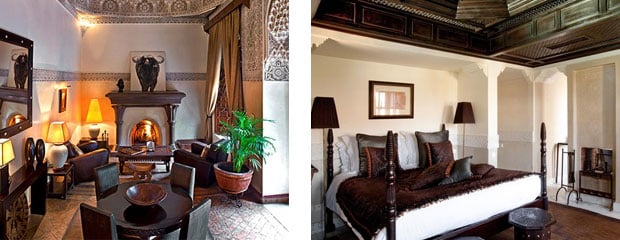
I encourage travelers to step out and enjoy the magical pleasures of delightful places to stay and leisurely strolls versus the rush of tours, group herds, and intense sightseeing. Some sightseeing, yes, especially when you are new to a locale. But the relentless pressure to “see everything” is not so much my style. Doing that kind of trip often means you see a lot of nothing that you can’t remember or even find barely meaningful.
Places to Shop
Akbar Delights and Moor: A small outpost is in the souks at Place Bab Fteuh, on 42 Rue de la Liberte Apt. 47, or a boutique at La Mamounia hotel.
Moor – 7 Rue du Vieux Marrakesh:
Both shops are owned by a French brother and sister with incredible taste and original collections.
Before You Go
Buy the book, Shopping Marrakech by Susan Simon
Enjoy the 1956 Alfred Hitchcock movie with Doris Day and James Stewart, The Man Who Knew Too Much. The medina looks the same today as it did then.

